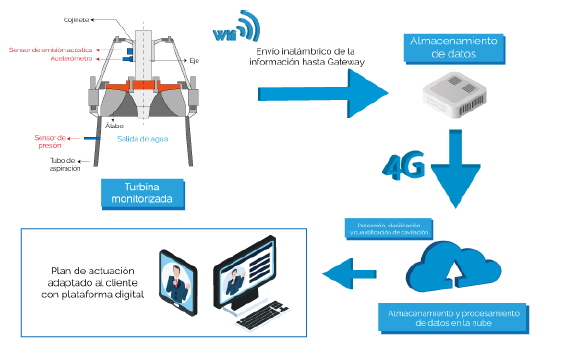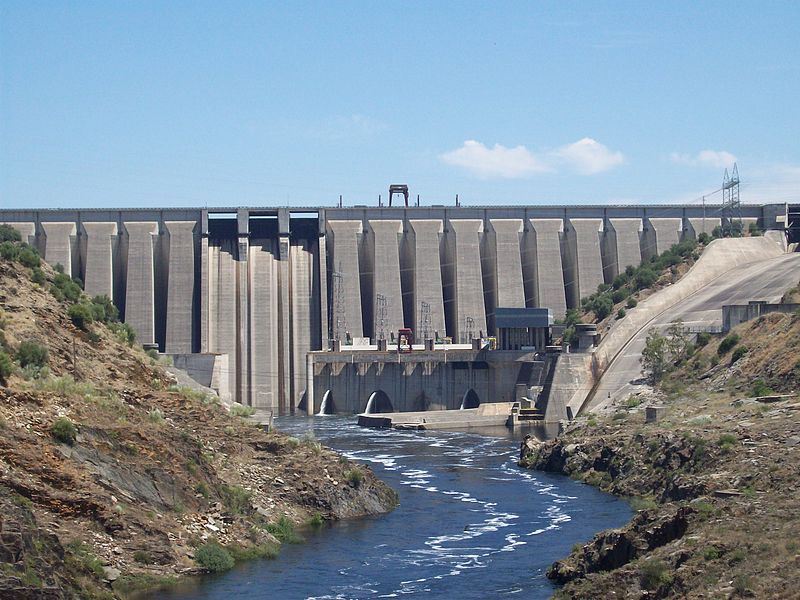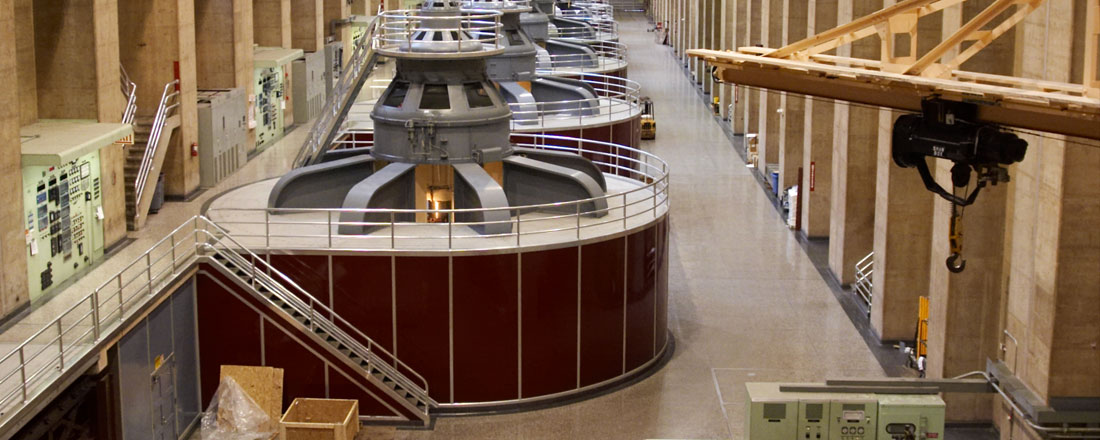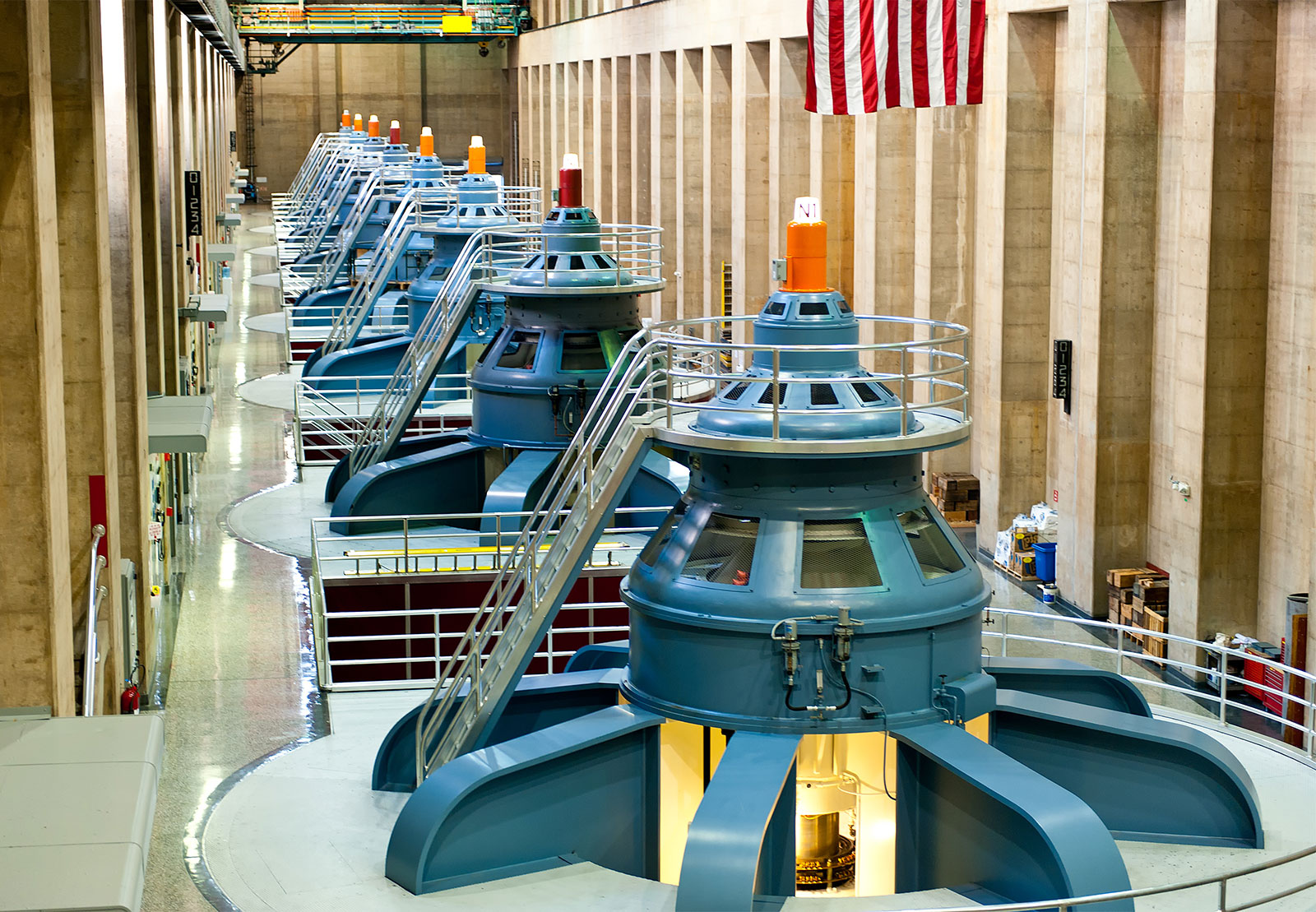CAV-TH System for the control and management of turbines in hydroelectric plants,which detects and classifies different cavitation phenomena even in their most primitive stages of progress
Details
Acronym: CAV – TH
Reference: RTC2019- 006947-3
Partners: Universitat Politecnica de Valencia and Instituto Tecnológico y de Energías Renovables.
Duration: 42 months (from 2020/07/01 to 2023/12/31)
Budget: 449.118,2 €
Co-Financing: Retos Colaboración 2019. Programa Estatal de I+D+i Orientada a los Retos de la Sociedad.

Overview of the project
Hydropower is already considered one of the main sources of renewable energy in Spanish territory, counting, according to data from 2018, with up to 20,380 MW of installed power. This magnitude assumes that this type of energy is already the third most used in our country, just behind the combined cycles (26,284 MW) and wind energy (23,466 MW). In addition, it should be noted that this is a sector that has a clear upward trend, since in the last 13 years (2006, 17,018 MW), the installed power figures have increased by about 20%.
Hydraulic energy is generated in facilities known as hydroelectric plants. In a hydroelectric power plant, the water falls between two levels, passing through a hydraulic turbine which transmits the energy to a generator where it is transformed into electrical energy. Due to its cost and function, the turbines are considered vitally important points in the production of electrical energy, being necessary to maintain the maximum level of service throughout its useful life.
One of the main problems found in hydraulic turbines addresses the occurrence of cavitation phenomena, being one of the main causes of failure in this type of elements. Cavitation is the
result of pressure reduction as a consequence of a sudden change in the flow velocity, which causes the formation of vapor cavities within it. Likewise, it does not follow a constant formation pattern, and it may occur in different ways depending on the type of cavitation that acts.
CAV-TH GENERAL PURPOSE is to develop a new monitoring system for hydraulic turbines able to detect on real time and for any type of turbine:
- The risk of cavitation phenomena.
- the existence of the phenomena prematurely and reliably.
- the type of cavitation, quantifying its intensity.
To successfully achieve the described goal, the new CAV-TH system will be developed, based on real-time monitoring of vibrations and pressure fluctuations produced in the turbine. It will
be accompanied by a powerful algorithm for the application of operation modal analysis techniques on the registers, and a mathematical model, calibrated and validated, which allows both the customization of the solution to any type of turbine and the introduction of the possibility of prediction.
The diagram below shows the operation of the solution:

The algorithms developed will make possible to identify each existing cavitation typology, since each one of them is associated with a certain frequency band. Likewise, in order to increase the precision of the system, fluctuations in pressure will be detected with a pressure sensor to support the classification of cavitation typologies that are detected at low frequencies.
Subsequently, to quantify the intensity and severity of each type of cavitation, the measurement of the amplitude of the frequency spectrum will be used. it will increase its magnitude without changing its shape, as the severity of the phenomenon increases. The results of the solution will be displayed through a cloud-based digital platform, which will allow potential customers to directly access the results obtained in each monitored turbine.



